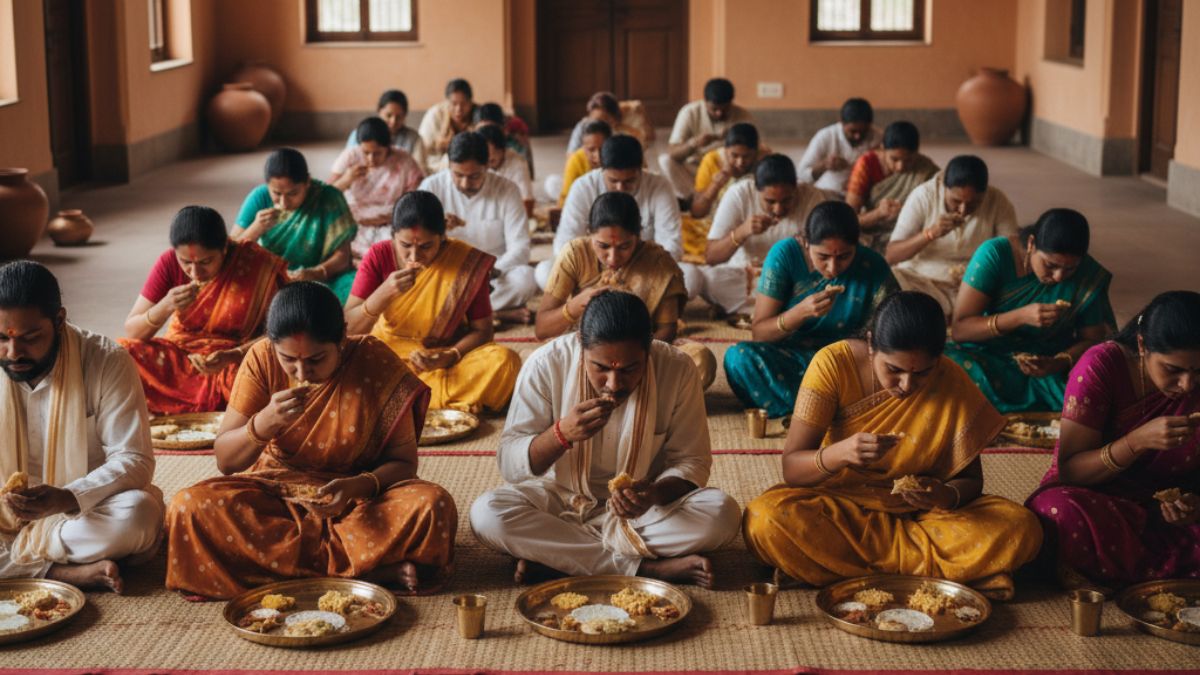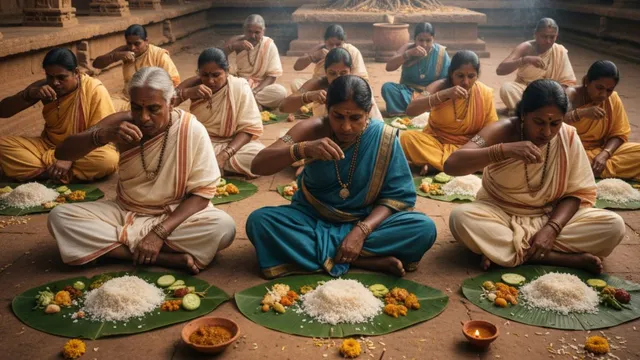- By Bornika Das
- Thu, 13 Nov 2025 10:16 AM (IST)
- Source:JND
Indian Eating Rituals: In India, food has always been considered as prana, life energy. Moreover, how you ate the food always mattered more than what you ate. Now, nutritionists are talking about mindful eating or gut health; however, in Indian households, there were certain ancient eating rituals that were practised and aligned food with with body rhythm, mood, and the planet’s pulse. These healthy eating habits are influenced by cosmic cycles, Ayurveda and spiritual practices focused on how the food was prepared, served and eaten. These Indian food traditions were holistic in nature of Indian food traditions that emphasising mindful eating, gratitude and a connection with nature.
There has been a steady revival of these age-old customs, which began with growing awareness about nutrition and mindful eating. These ancient eating rituals of Indian culture have benefited health in enhancing digestion, immunity and overall well-being. Here are the five Indian eating rituals that still make perfect sense today.
Ancient Indian Eating Rituals Incorporated Into Modern Life
Eating With Your Hands
Our ancestors practised eating with their hands and it is considered a sensory act, as it engages touch, temperature and texture before the first bite reaches the mouth. As per Ayurveda, each fingertip connects to an element that is earth, water, fire, air and space and when they come together, whole eating, they balance energy in the body. Moreover, it also slows down, encourages smaller bites and signals satiety earlier, which are simple are powerful ways to prevent overeating.
Recommended For You
ALSO READ: Sadhguru’s 10 Life-Changing Food Habits That Help Live A Longer Life
Sitting On the Floor
Sitting in the cross-legged sukhasana position on the floor gently compresses the abdomen and activates the vagus nerve, which improves digestion. The movement of bending forward to take a bite and leaning back to chew also helps food move naturally through the digestive tract. Besides, the posture instils humility, which is a reminder that food is sacred and gratitude comes before indulgence.
Eating At Fixed Hours
As per the ancient Indian eating rituals, the body runs on an inner clock, or dinacharya. Lunch and not dinner should be the main meal, as agni, the digestive fire, is strongest when the sun is at its peak. Consistent meal times help stabilise metabolism and also prevent insulin spikes that the modern chrononutrition agrees to. Late-night means, on the other hand, confuses the body’s rhythm and often leads to sluggish mornings. Thus the simple rule is to eat with the sun and not against it.

Ancient Indian Eating Habits (Image Credits: Canva)
Eating In Silence
Silence during meals was maintained in ancient India. Indians, before eating, narrated a short prayer - Bhojan mantra or a quiet “Om”, to express gratitude and calm the mind. Ayurveda explains that the state of the mind while eating becomes the state of your body after eating. Thus, when distracted, your body interprets food as stress and when you eat peacefully, digestion becomes effortless.
ALSO READ: Nutritionist Explains 5 Ways Skipping Meals Can Sabotage Your Health Goals
Fruit And Yoghurt Bowl
In Indian tradition, ending the meal with sweetness means completion and a gentle end to the digestive process. Finishing with a piece of gur (jaggery), mishri or even kheer was believed to cool the stomach and satisfy the senses. In Ayurveda, madhura rasa (sweet taste) grounds the body, improves mood, and nourishes tissues. However, what they kept in mind was that it shouldn’t be excessive and just a spoonful and savoured slowly.
Thus, these ancient eating rituals of India hold enduring value and relevance for the modern era. It is important to embrace customs which lead to healthier bodies, peaceful minds, and sustainable habits.





